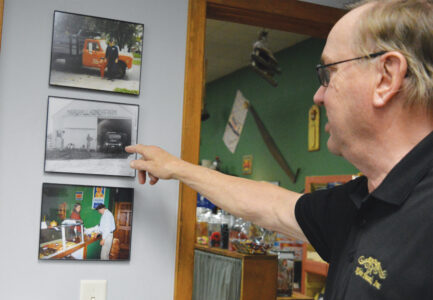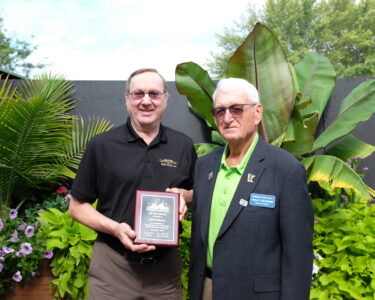Patty and Jerry Wetterling continue to work to help families of missing children, 25 years after the disappearance of their son
MARSHALL – Patty and Jerry Wetterling are ordinary people who have accomplished extraordinary tasks in the aftermath of their son Jacob’s abduction in 1989.
Through their pain and experience, the Wetterlings have become tireless advocates for the past 25 years, helping countless families of missing children. In addition, the couple ? who still have more questions than answers regarding the unsolved kidnapping of their 11-year-old son ? have successfully pushed for laws to help keep children more safe.
The board chairperson, Patty Wetterling, has served on the board for the National Center for Missing and Exploited Children (NCMEC) since 1999. Since opening in 1984, the organization has served as the nation’s clearing house on issues relating to missing and sexually exploited children. In the last 30 years, the NCMEC has handled more than 3.9 million calls.
“We learned quickly, through letters and phone calls, that we had tapped into this river of victimization we knew nothing about,” Patty Wetterling said. “Child sexual abuse and exploitation wasn’t in my vocabulary. I knew nothing about it. Then you hear about all these other victims and it’s like, ‘whoa.’ So we saw a bigger picture. It was bigger than Jacob.”
FOUNDATIONS IN JACOB’S NAME
According to Patty Wetterling, her husband was pivotal in forming the first foundation for Jacob, called Friends of Jacob. An office was established in the basement of a local bank.
“There were about 10 people, townsfolk, that were wanting to do something,” Jerry Wetterling said. “Besides their regular jobs, they were kind of meeting and organizing events and getting fliers out. The first big mailing was on Patty’s birthday, November 2.”
California native David Collins, whose son Kevin went missing from a bus stop in 1982 and has never been found, also became a resource for the Wetterlings, as did Minnesota snowbirds.
“We printed fliers and had everybody bring stamps,” Jerry Wetterling said. “It was astronomical what we were spending. And there were a lot of snowbirds who would take fliers out to Arizona or Florida when they went.”
Eventually, the volunteer effort became too much for those involved. So four months after Jacob’s abduction, the Wetterlings formed the Jacob Wetterling Foundation, an advocacy group for children’s safety and announced it on Jacob’s birthday – Feb. 17, 1990.
JWF was later changed to the Jacob Wetterling Resource Center, whose vision is to end all forms of child abuse, neglect and exploitation through training, education, advocacy, prevention and awareness in addition to providing care and treatment for children, families and adult survivors.
“In the beginning, law enforcement was asking questions, like is there anyone who liked Jacob too much?” Patty Wetterling said. “Does anybody take him anywhere or buy him anything? So they knew about predators. They were sort of educating us.”
LEGISLATIVE PUSH INTO LAW
Unfortunately, it often takes tragic events to change laws. This is certain true regarding the safety of children. At the time of Jacob’s kidnapping, there was not a comprehensive list of sex offenders for law enforcement to utilize in their investigation.
“It was chaos because there were no databases at that time,” Patty Wetterling said. “They’d have to go to every county jail or city jail in the state. It was a nightmare. It takes time, and you don’t have time when it comes to missing children.”
When the Wetterlings learned of this, they decided to take action, leading to Minnesota’s Sex Offender Registration Act in 1991.
In 1994, the Jacob Wetterling Act was passed in Minnesota, marking the first law to mandate sex-offender registries in every state. More strict requirements were subsequently implemented on a national basis when the Jacob Wetterling Crimes Against Children and Sexually Violent Offender Registration Act was included in the Federal Violent Crime Control and Law Enforcement Act of 1994.
The law was designed for investigative purposes, Patty Wetterling said, though later, it became more public. Amendments followed, starting with Megan’s Law, named for Megan Kanka, who was abducted, sexually assaulted and murdered by a twice-convicted pedophile living across the street, in 1996. Megan’s Law requires law enforcement agencies to release information about registered sex offenders that are deemed dangerous to the public.
“It’s unfortunate that it takes tragedies to bring about changes,” said Rob Yant, Marshall director of public safety. “It’s such a benefit, though, when parents try to do things to keep it from happening again. They make a difference.”
The Pam Lyncher Sexual Offender Tracking and Identification Act, requiring the FBI to establish a national database of sex offenders to assist law enforcement agencies in tracking sex offenders across state lines, was also passed as an amendment in 1996. The Adam Walsh Child Protection and Safety Act of 2006 then broadly updated and strengthened various areas of law regarding the protection of children, including increases in mandatory minimum sentences for sex offenders, increases in sentences for Internet crimes against children and upgrades in sex offender registration and tracking stipulations.
While there are a variety of controversial issues, Patty Wetterling said she is most concerned about juveniles convicted of sexual offenses because the law, she believes, was not designed for children.
MANAGING SEX OFFENDERS
Effective Jan 1, 1997, the Minnesota Community Notification Act requires assignment of a risk level for offenders subject to registration as a predatory offender before they are released from a state prison or treatment center. According to the Minnesota Department of Corrections, about 8,000 of the state’s 17,400 registered predatory offenders are required to have a risk level assigned.
The MDC estimates that 58 percent of the offenders are considered Level 1, which are deemed low risk to the public. About 29 percent are Level 2, classified as a moderate risk to the public, while 13 percent fall into the Level 3 category and are considered the highest public risk. As of 2013, there were 272 Level 3 offenders living in Minnesota communities.
“Sex offenders used to just be released when their sentences were done,” Yant said. “But now, the biggest thing is that they established a follow through with the classifications. It’s for public safety. The classification is based on the likelihood of the person to re-offend.”
Yant noted that Marshall has one Level 3 offender, which the public was notified about.
“His issue was that he couldn’t follow the rules when he was released,” Yant said. “If they’re out on parole and they don’t follow those guidelines, they can be returned to jail. It keeps people accountable.”
Yant said monitoring sex offenders is now considered part of the job for local detectives.
“We assign it to our detectives to do as part of their duties,” he said. “We have 60 people we are currently monitoring. The goal is to keep them from re-offending.”
OTHER EFFORTS
The AMBER Alert System began in 1996 and has since helped save the lives of 495 children nationwide, according to the Department of Justice. AMBER stands for America’s Missing: Broadcast Emergency Response and was created in honor of 9-year-old Amber Hagerman, who was kidnapped while riding her bike in Arlington, Texas, and then brutally murdered. By 2005, all 50 states adopted similar AMBER Alert plans.
“There are certain criteria that have to be met and if it does, it goes into an AMBER Alert,” Yant said. “It’s a relatively immediate thing. With the criteria and refinement, there isn’t a lot of false reports going out. It works pretty well.”
Established in 1998, Team HOPE (Help Offering Parents Empowerment) offers a parent-to-parent mentoring program for mothers and fathers of missing children. In 2004, the group officially became a part of the NCMEC, continuing to be a vital lifeline for families.
PREVENTION IS KEY
As director of the Minnesota Department of Health’s Sexual Violence Prevention program, Patty Wetterling wholeheartedly believes in prevention. The organization’s goal is to create a culture where sexual violence is unthinkable. The program works to change the social norms and attitudes that support, condone or ignore sexually violent messages and behavior, which contributes to the problem. Those sexual violence norms include destructive gender socialization, uses of sex for power and control, exploitive images of women and children in the media and narrow definitions of masculinity and femininity.
Not only does sexual violence damage victims, it’s also financially expensive. Department statistics report that in 2005, costs of sexual violence in Minnesota totaled $8 billion – 3.3 times as much as alcohol-impaired driving costs in the state.
“I know people can heal, but I also know the challenges with that and how hard it is,” Patty Wetterling said. “It’s an ongoing thing. And most of the parents I’ve worked with over the years wish it never would have happened in the first place.”


